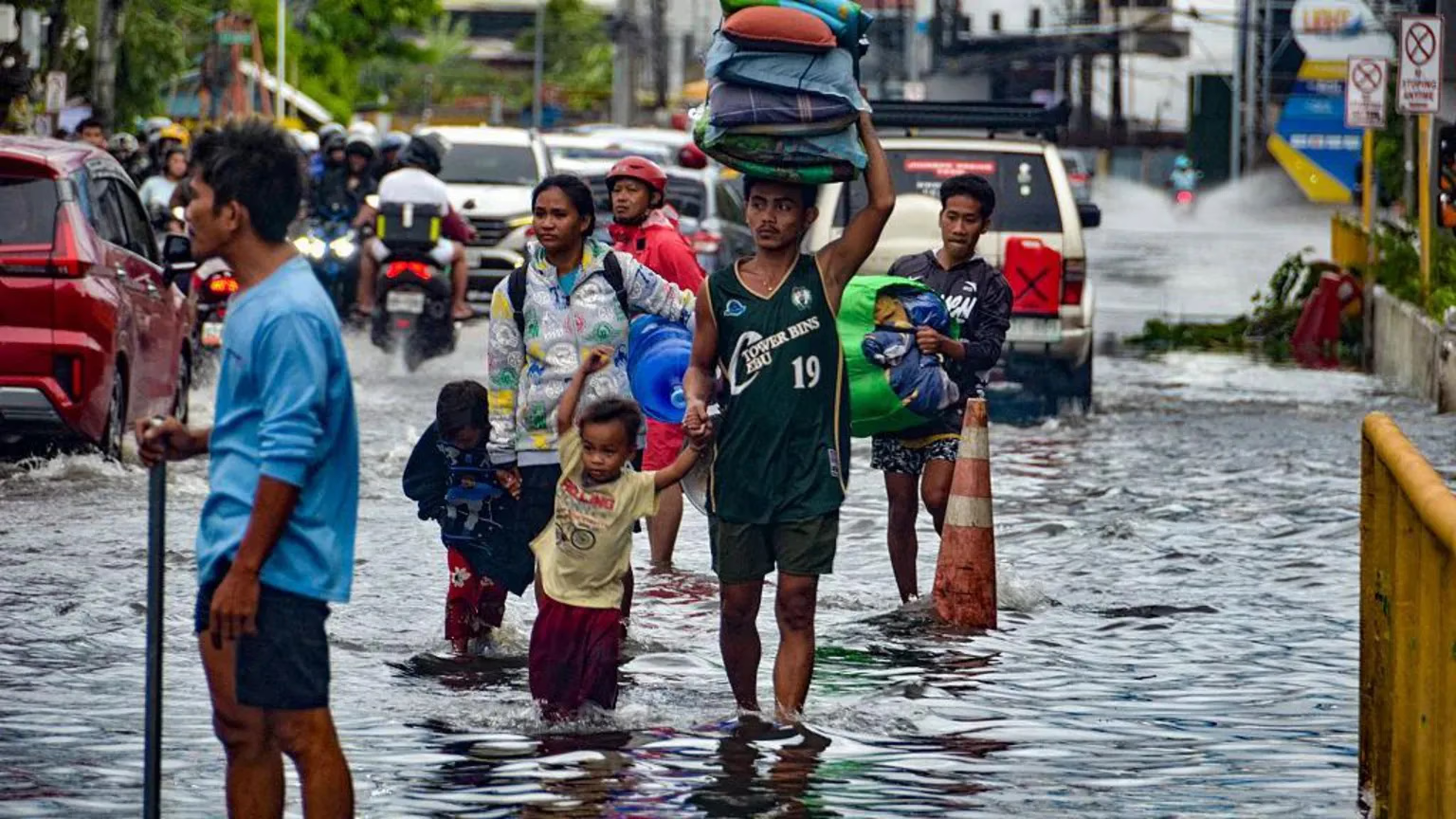Typhoon Kalmaegi struck the central Philippines on November 4, 2025, causing the worst flooding and destruction in a decade. The island of Cebu was hit hardest, receiving a month’s worth of rainfall in just 24 hours as rivers overflowed and dozens of towns were submerged. At least 114 people were killed and more than 120 remain missing. On November 6, President Ferdinand Marcos Jr. declared a state of emergency amid ongoing rescue operations and the approach of another storm, Uwan.
Philippine President Ferdinand Marcos Jr. declared a state of emergency following Typhoon Kalmaegi—one of the strongest storms of the year. The disaster triggered massive flooding in the country’s central region, killing at least 114 people, according to official figures.
The island of Cebu, the most densely populated in the region, was the worst hit, with 71 confirmed deaths, 127 missing and 82 injured. Provincial authorities reported another 28 fatalities not yet included in the national count, AFP reported.
The typhoon left the Philippines on Thursday morning and is now moving toward central Vietnam, where residents are still recovering from recent floods that claimed dozens of lives.
According to the president, the decision to declare a state of emergency was made because of the devastation already caused by Typhoon Kalmaegi, as well as the approach of another storm, Uwan, which could strike the country over the weekend. “Nearly ten regions will be affected—possibly ten to twelve. At that scale, we’re talking about a national disaster,” Marcos told local media.
A state of emergency in the Philippines is declared in cases of mass casualties, major property damage and disruption of daily life. It grants government agencies additional powers to access reserve funds and speeds up the procurement and delivery of humanitarian aid.
Most of the victims reportedly drowned. Torrents of muddy water poured down from the mountains, inundating towns and villages. Many homes on Cebu were destroyed, particularly in residential neighborhoods, and after the waters receded, the streets were left covered in thick mud. Local authorities described the typhoon’s aftermath as “unprecedented.”
Residents returning to their destroyed homes are in shock at the scale of the devastation. Business owner Jhel-ann Moira Serves from the city of Mandaue told the BBC that within minutes the water had risen to her waist, forcing the family to evacuate quickly, taking only food and electronics. “The rain has stopped and the sun is out, but our houses are still buried in mud, everything inside is destroyed,” she said. “We don’t know where to start cleaning. I can’t look at it without crying.”
The National Disaster Agency reported that on Cebu, home to 2.5 million people, more than 400,000 residents were forced to leave their homes because of the storm.
Among the dead were six crew members of a military helicopter that crashed on the island of Mindanao during a relief mission.
Volunteer rescuer Carlos Jose Lanas told the BBC that despite thorough preparations, the scale of the flooding was unexpected. “This is the worst flood I’ve ever seen,” said the 19-year-old Lanas. “Almost every river on Cebu overflowed. Even the emergency services didn’t anticipate such a development.”
He said the number of calls for help was so overwhelming that “the rescue operation proved too difficult for all the services involved in Cebu.”
